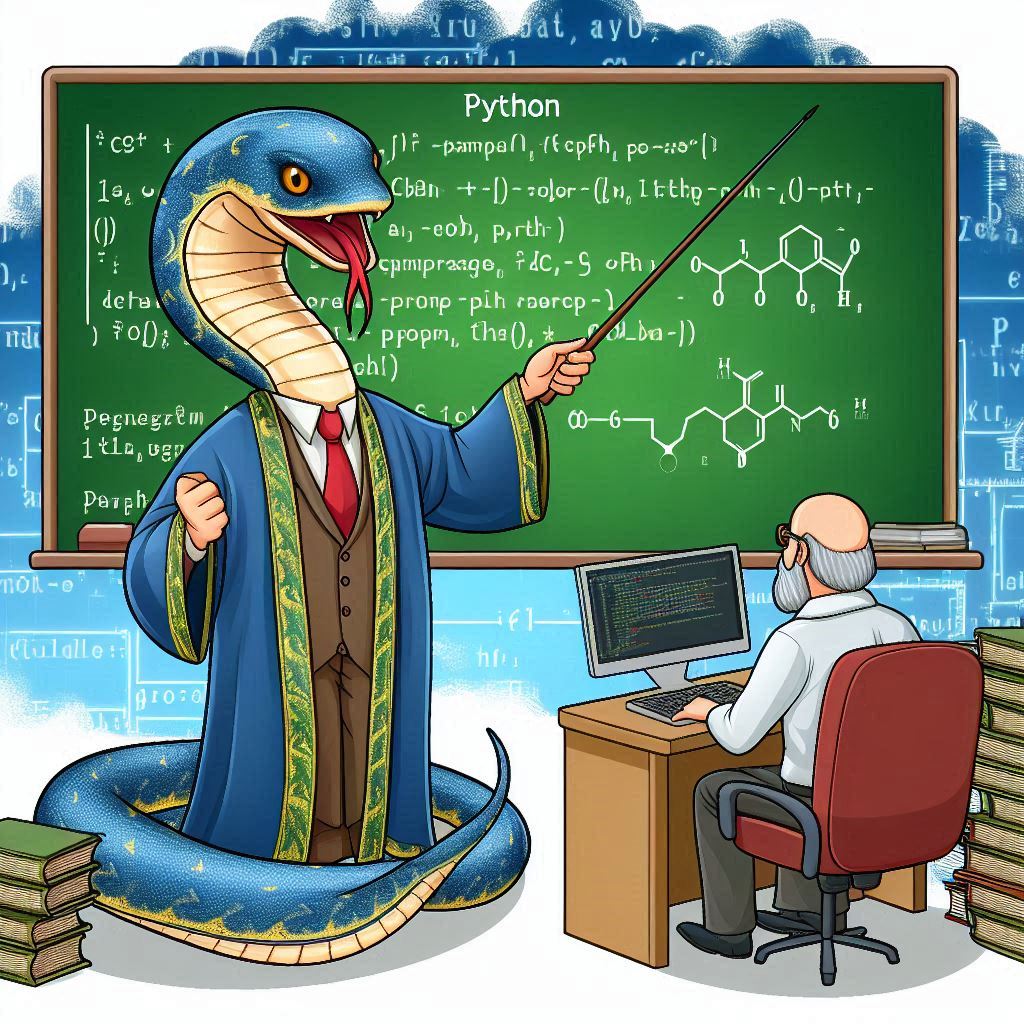
Python is one of the most popular and versatile programming languages in the world today.
Known for its simplicity and readability, Python is an excellent choice for beginners, yet powerful enough for professionals in a wide range of industries.
What is Python?
Python is a programming language that was created by Guido van Rossum, and first released in 1991.
Unlike many programming languages that require you to compile your code (which means converting it into a form the computer can understand before it runs), Python code is run directly by a program called an interpreter. This means you can quickly write and test new code without worrying about a lengthy setup process.
One of the key features of Python is its simplicity, which makes it very accessible for newcomers to coding.
Python is referred to as a high-level language, which means you can often express ideas with fewer lines of code than you might need in other languages, like C++ or Java. This simplicity doesn't mean it's a basic tool: Python is powerful enough to be used by scientists, engineers, and programmers at top companies and organizations around the world.
Python opens the door to a vast array of possibilities. From building websites and games to analyzing data and automating routine tasks, Python equips you to handle real-world problems from the get-go. With an extensive library of pre-written codes, beginners can tackle complex tasks without needing to know everything.
How is Python used?
Python’s simplicity and powerful libraries have made it the backbone of several cutting-edge projects and applications.
Websites like Instagram and Pinterest use Python’s Django framework to handle their traffic and functionalities.
Python provides the foundation for many data visualization and machine learning projects, powering projects ranging from detecting diseases from x-ray images to predicting stock prices.
Python capabilities even reach Space.
NASA uses Python for various programming tasks, such as data analysis and launch simulation, within their space missions.
Python is also extensively used in the film industry for tasks like scriptwriting, animation, and special effects. The software that was used to create the special effects in blockbuster movies like "The Lord of the Rings" was partially written in Python.
 Lord of the Rings, Fellowship of the Ring (2001)
Lord of the Rings, Fellowship of the Ring (2001)
Python and AI
Python has established itself as a pivotal language in the burgeoning field of artificial intelligence (AI), offering an array of frameworks and libraries tailored for AI, machine learning (ML), and deep learning projects. The language's straightforward syntax and readability make it an ideal choice for developers and researchers who are pioneering AI technologies, as it allows them to focus more on solving AI problems rather than getting bogged down by complex programming nuances.
One of the reasons Python is so popular in AI development is its extensive ecosystem of libraries and frameworks. Libraries like TensorFlow, PyTorch, and Keras simplify the process of building and training complex neural networks, which are at the heart of many AI applications. These tools provide a high level of abstraction, making it accessible for non-experts to experiment with AI while also being robust enough for power users to build cutting-edge systems.
Python’s versatility extends to areas of AI such as natural language processing (NLP) with libraries like NLTK and spaCy, which are used for building systems that can understand and interpret human language with remarkable accuracy.
In the realm of computer vision, libraries such as OpenCV allow developers to implement image recognition and object detection, enabling applications that range from automated photo tagging to real-time video analysis.
The collaborative nature of the Python community also drives innovation in AI. With thousands of contributors working on improving and expanding Python's AI capabilities, there is a continual advancement in the tools available. This collaboration ensures that Python stays at the forefront of AI research, making it not just a language of choice but a thriving hub for AI innovation.
As AI continues to evolve, Python's importance in this domain is expected to grow, maintaining its status as a critical tool in the development of intelligent, automated systems.
Why is Python So Popular?
Python owes its popularity to several factors:
Readability and Simplicity: Python's syntax is clear and intuitive, which makes it an excellent choice for beginners in programming. Because it's "high level", its commands and structures resemble English, reducing the learning curve and making coding more accessible.
Versatility: Python can be used for a multitude of programming tasks, from web development to data analysis, and from artificial intelligence to scientific computing. This versatility makes it a valuable skill across many job sectors.
Extensive Libraries and Frameworks: Python’s standard library is very comprehensive, and its package management systems, like pip, make it easy to access thousands of third-party libraries. Frameworks like Django and Flask facilitate web development, while NumPy and Pandas are invaluable for data analysis.
Community Support: Python has a large and active community which contributes to a vast ecosystem of software libraries and modules, making it easier to find solutions and get assistance.
Education and Enterprise Adoption: Python is widely adopted in education, encouraging its use among students and researchers. Major companies and organizations, including Google, NASA, and Netflix, use Python in their operations, which testifies to its reliability and scalability.
So..
Python stands out as a programming language due to its simplicity, versatility, and robust community support.
For those new to programming like yourselves, Python offers an accessible and enjoyable entry point into the world of software development.
Whether you dream of developing cutting-edge apps, analyzing scientific data, or simply automating the mundane tasks on your computer, Python provides the tools and community to turn these dreams into reality.
With Python, the world of programming is not just accessible—it's exciting, inviting, and immensely rewarding.
So why wait? Let's dive into Python and start turning your ideas into real projects today!